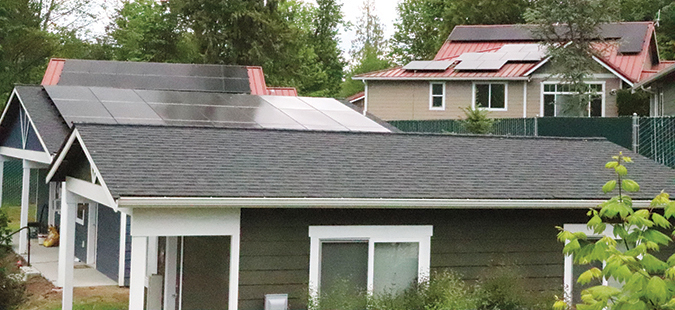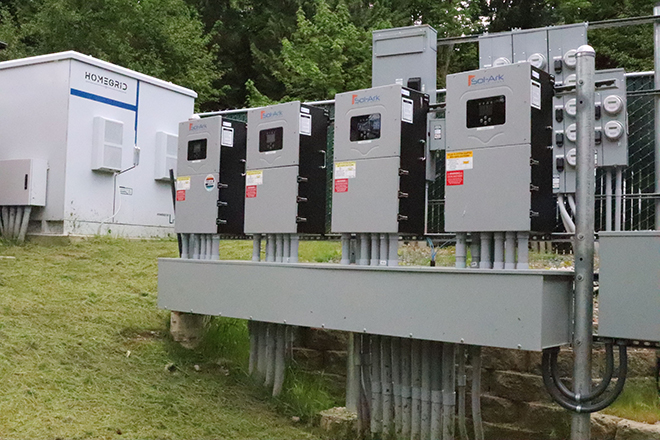
By Wade Sheldon, Tulalip News
The Village of Hope and the adjacent Family Shelter, which currently provide housing for 23 families on the Tulalip Reservation, recently installed a solar energy and battery backup system. This project was made possible through a grant from the Washington State Department of Commerce designed to support resilient communities. The goal: to ensure that families have access to basic needs like warmth, electricity, and connectivity during power outages.
Power interruptions on the reservation have lasted as long as nine days in the past. During such times, the need for backup solutions became clear. According to Teri Nelson, Tulalip Tribes Executive Director of Housing Services, this project is about more than just alternative energy, it’s about creating a reliable, centralized hub where families can gather during outages.
“When we were first building during the height of COVID, everything was expensive,” Nelson explained. “We looked into installing individual generators, but the cost was too high. Later, when the solar grant opportunity came up, we saw it as a chance to invest in something more sustainable.”
Instead of powering each home, the system is designed to support the Village of Hope’s central community building. This decision was based on both cost and functionality. The building includes a kitchen, food storage, showers, and a space for residents to gather, making it an ideal location for backup power.

Nelson emphasized the importance of having automatic, hands-free power during emergencies. “This system doesn’t require anyone to come flip a switch,” she said. “It turns on automatically when the grid goes down. In the dead of winter, that matters.”
Tulalip Emergency Management and the Tulalip Fire Department were brought in during the planning stages to assess safety concerns, mainly since the battery system includes Tesla technology. Based on their recommendations, the batteries were housed outside in a contained unit to prevent fire hazards from affecting the main structure.
Michiel Zuidweg, Founder of MZ Solar Consulting, explained that the solar panels are spread across multiple rooftops but feed into one centralized battery and distribution point in the community center. “During normal conditions, the system powers the building and sends any excess energy back to the utility,” he said. “That credit can then be used at night or in off-peak seasons.”
In an outage, the system instantly switches to battery power without flickering or interruption. Zuidweg noted that the team tested the system by simulating a power outage. “People didn’t even notice—the transition was seamless. Computers stayed on, TVs kept playing.”
Specific systems were programmed to shut off automatically to extend the battery’s life during outages, like the dryers and some heating circuits. “In the winter, the battery provides about a day of backup power. In the summer, the system can operate autonomously because it generates far more energy and less demand,” he added.
The project is expected to save around $5,500 in electrical costs in its first year. These savings will increase annually as utility rates rise. Although no plans exist to expand this system to the individual cabins on site, the tribe is exploring similar projects for other locations, such as the Tulalip Senior Center and future ADA housing units.
Nelson believes these kinds of systems could benefit more vulnerable members of the community, especially elders who rely on power for medical equipment and warmth. She also reflected on the community’s growing sense of connection. “This isn’t just housing. After two years, these families have become like a family. If the power goes out, they’ll come together, cook, and support each other.”
As solar technology becomes more accessible, the hope is to build resilience and inspire interest in sustainable energy careers. “This is the direction we’re heading—toward cleaner, more self-sufficient solutions,” said Nelson.